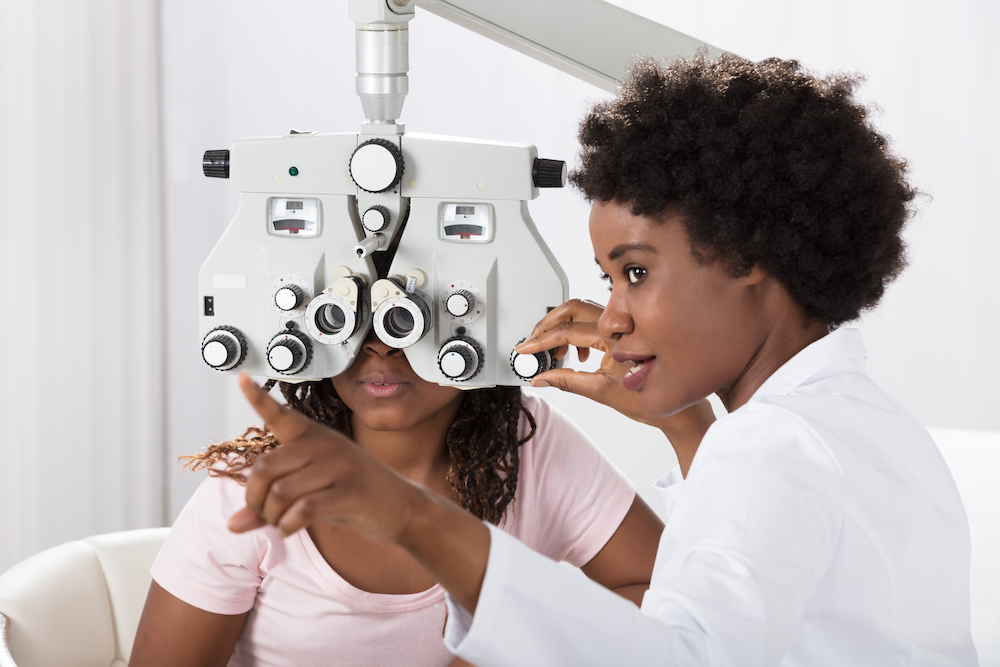Common Eye Diseases and Their Top Symptoms

Our eyesight is one of our most important assets and is something that we rely on all day every day. Unfortunately, there are many different diseases that can affect our eyes and eye health. Many of these diseases can put our vision at risk if they aren’t detected and treated quickly. For this reason, it can be very helpful to be aware of some of the most prevalent eye diseases and their development symptoms.
Here are five of the most common eye diseases and their symptoms. If you experience any of the following, we strongly recommend that you speak to your eye doctor as soon as possible.
Macular Degeneration
Macular degeneration is a leading cause of blindness and typically starts to develop after the age of around 60, however it can affect people of any age. It occurs when the cells of the central part of the retina, called the macula, start to deteriorate. You are particularly at risk of macular degeneration if you smoke, are female, or have a family history of the disease. Unfortunately, there’s no cure for macular degeneration, although treatments can prevent your vision from getting any worse.
Most cases of macular degeneration develop very slowly over several months or years. Key symptoms include:
Blurred vision
Straight lines seem bent or wavy
Needing brighter lighting to focus on nearby tasks
Struggling to adapt to low light
Finding simple day to day tasks like watching tv or reading difficult
Having issues recognizing faces
Cataracts
Cataracts are another condition associated with advancing age, and while they are more common in older people, they can develop at any time. Cataracts occur when cellular changes in the natural lens of the eye cause proteins to clump together, causing cloudy patches that obscure your vision. They can develop in one eye or both, and the rate at which they develop can vary too. Again, there is no cure, but prescription lenses can help improve your vision for some time. Surgery can be used to replace the clouded lens with an artificial alternative.
Common symptoms of cataracts include:
Vision that seems as though you are looking through frosted glass
Sensitivity to light and glares
Seeing halos around lights
Colors seem faded or yellowed
You need brighter lighting for reading and other activities
Glaucoma
Glaucoma is another leading cause of blindness and is a condition characterized by damage to the optic nerve, and this occurs because of excess pressure inside the eye. Anyone can develop glaucoma, but it tends to be inherited and is more common in older individuals. Unfortunately, any vision lost due to glaucoma is permanent. Early diagnosis and treatment are crucial.
The symptoms of glaucoma usually develop slowly, although there is also an acute form which comes on very rapidly. The main symptom of slow-developing glaucoma is loss of peripheral vision, and this is usually detected at your routine eye exams by your doctor.
Acute glaucoma causes the rapid onset of symptoms including:
Severe eye pain
Nausea and vomiting
Headaches and migraines
Blurred vision
Presbyopia
Presbyopia is a refractive eye condition that is similar to myopia (nearsightedness) and hyperopia (farsightedness) but occurs when the natural lens of the eye starts to harden with age. This makes it less flexible, and it becomes harder to focus on nearby objects such as books and cell phone screens. Fortunately, your vision can usually be corrected using prescription lenses.
The primary symptom of presbyopia is the inability to focus on nearby objects, and you may find yourself holding them further away so that you can see them more clearly.
Dry Eyes
Dry eyes take their name from the primary symptom that the condition causes. Dry eyes develop when there is an issue with the tear film that typically coats the surface of the eyes. It may lack the oils needed to give it it’s lubricating qualities; your body may not make enough or may drain too quickly. Most people will experience dry eyes during their lifetime, but some people have recurrent episodes. Fortunately, there are lots of treatments that can help, ranging from eyedrops to eyelid inserts and surgery.
Symptoms of dry eyes include:
Eyes that feel dry, itchy, and irritated
Red eyes
Blurred vision
Sensitivity to light
Difficulty wearing contact lenses
Sensations that you have something in your eyes
For more on common eye diseases and their top symptoms visit St. Marys Family Eyecare in St. Marys, Ohio. Call at (419) 800-0400 today to schedule an appointment.






